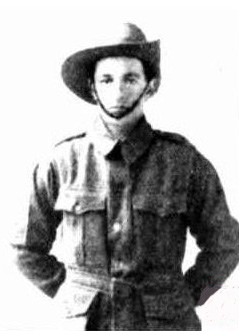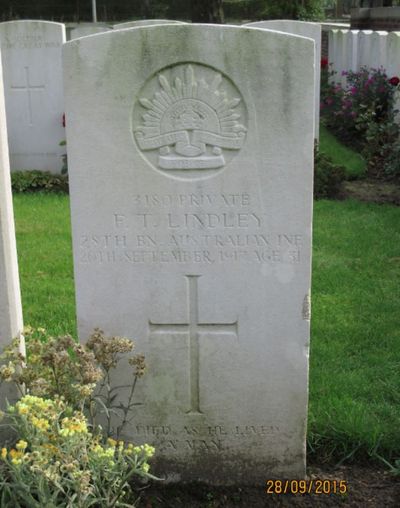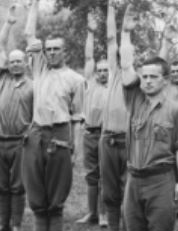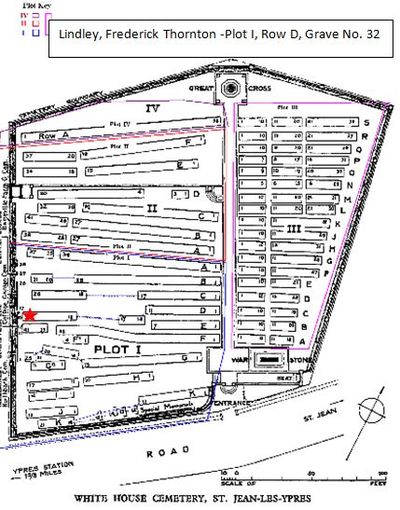Difference between revisions of "Frederick Thornton Lindley"
From Our Contribution
| Line 79: | Line 79: | ||
The wound that he received on 29 Jul 1916 just north of Pozieres was a GSW to his left hip and right thigh. Initially treated by the 1st Australian Field Ambulance, his treatment was taken over by the St John Ambulance Brigade in Étaples and he was shipped back to Britain on [[HMHS Newhaven]] from Calais on the 12 Aug 1916. (The 28th Battalion's losses for the month of July were 63 KIA, 151 WIA, 52 to Illness, and 257 Missing.) | The wound that he received on 29 Jul 1916 just north of Pozieres was a GSW to his left hip and right thigh. Initially treated by the 1st Australian Field Ambulance, his treatment was taken over by the St John Ambulance Brigade in Étaples and he was shipped back to Britain on [[HMHS Newhaven]] from Calais on the 12 Aug 1916. (The 28th Battalion's losses for the month of July were 63 KIA, 151 WIA, 52 to Illness, and 257 Missing.) | ||
| − | Fred received treatment in the 2nd Western General Hospital in Manchester until 5 Oct 1916 when he was transferred to No 1 Command Depot in Perham Downs. He proceeded overseas again | + | On arrival in England, Fred received treatment in the 2nd Western General Hospital in Manchester until 5 Oct 1916 when he was transferred to No 1 Command Depot in [[Perham Downs]]. Granted furlough during his time at Perham Downs, he reported to the Infantry Draft Depot at Perham Downs on 6 Jan 1917. He proceeded overseas again through Folkestone on 5 Jul 1917, so he has been away from his unit for almost a full year. |
| − | + | Fred rejoined the 28th Battalion on 31 Jul 1917 at Cassells where they are retraining and regrouping. During the attack towards Zonnebeke in a battle later known as Menin Road, the 28th Battalion pushed their front line to the northern edge of Polygon Wood. During that action, Fred was one of 69 men from his unit who lost their lives. Many of those lost, were killed by snipers. | |
<div><ul> | <div><ul> | ||
Revision as of 23:28, 26 February 2019
 Western Mail 29 Sep 1917 p.27 | |
 Linton Reynolds photo | |
| Personal Information | |
|---|---|
| Date of Birth | 28 Jul 1886 |
| Place of Birth | Sydney, New South Wales |
| Death | 20 Sep 1917 |
| Place of Death | Battle of Menin Road |
| Age at Enlistment | 29 years old |
| Description |
5'5" (1.65m) tall ; 122 lbs 55.338 kg ; sallow complexion ; brown eyes ; black hair |
| Occupation | Storekeeper |
| Religion | Church of England |
| Address | Kelmscott, Western Australia |
| Next of Kin | Brother , Mr George Thomas Lindley |
| Military Information | |
| Reg Number | 3180 |
| Date of Enlistment | 6 Sep 1915 |
| Rank | Private |
| Unit/Formation | 28th Battalion, 7th reinforcement / 7th Brigade, 2nd Division |
| Date of Embarkation | 18 Jan 1916 ‒ 16 Feb 1916 |
| Ship Embarked On | HMAT A7 Medic |
| Fate |
Wounded in Action 29 Jul 1916 at Poziéres Killed in Action 20 Sep 1917 at Menin Road |
| Monument |
Kelmscott War Memorial (North panel) Australian War Memorial |
| Medals |
1914-15 Star British War Medal Victory Medal |
Contents
Pre War
Electoral Rolls 1910 - 1913. Pickering Brook, storeman. Relatives in Westonia. In 1914 was said to have been the owner of the Pickering Brook Post Office and store.
War Service
Fred entered Blackboy Hill camp on 6 Sep 1915, and was allocated to the 7th reinforcement draft for the 28th Battalion on 1 Nov 1915.
After arriving in Alexandria on 16 Feb 1916, Fred was put on board the SS Oriana five weeks later (21 Mar 1916) for the voyage to Marseilles in southern France. It was some time before he joined the 28th Battalion more formally in France, with that occurring on 3 May 1916 at Bois Grenier.
The wound that he received on 29 Jul 1916 just north of Pozieres was a GSW to his left hip and right thigh. Initially treated by the 1st Australian Field Ambulance, his treatment was taken over by the St John Ambulance Brigade in Étaples and he was shipped back to Britain on HMHS Newhaven from Calais on the 12 Aug 1916. (The 28th Battalion's losses for the month of July were 63 KIA, 151 WIA, 52 to Illness, and 257 Missing.)
On arrival in England, Fred received treatment in the 2nd Western General Hospital in Manchester until 5 Oct 1916 when he was transferred to No 1 Command Depot in Perham Downs. Granted furlough during his time at Perham Downs, he reported to the Infantry Draft Depot at Perham Downs on 6 Jan 1917. He proceeded overseas again through Folkestone on 5 Jul 1917, so he has been away from his unit for almost a full year.
Fred rejoined the 28th Battalion on 31 Jul 1917 at Cassells where they are retraining and regrouping. During the attack towards Zonnebeke in a battle later known as Menin Road, the 28th Battalion pushed their front line to the northern edge of Polygon Wood. During that action, Fred was one of 69 men from his unit who lost their lives. Many of those lost, were killed by snipers.
Notes
Buried at ST. JEAN-LES-YPRES, WHITE HOUSE CEMETERY - Plot I, Row D, Grave 32. Son of George Henry and Lucy Lindley. Native of NSW. The Cemetery is located north-east of Ieper (Ypres) on the Brugseweg (N313) in the direction of Roeselare / Brugge.


